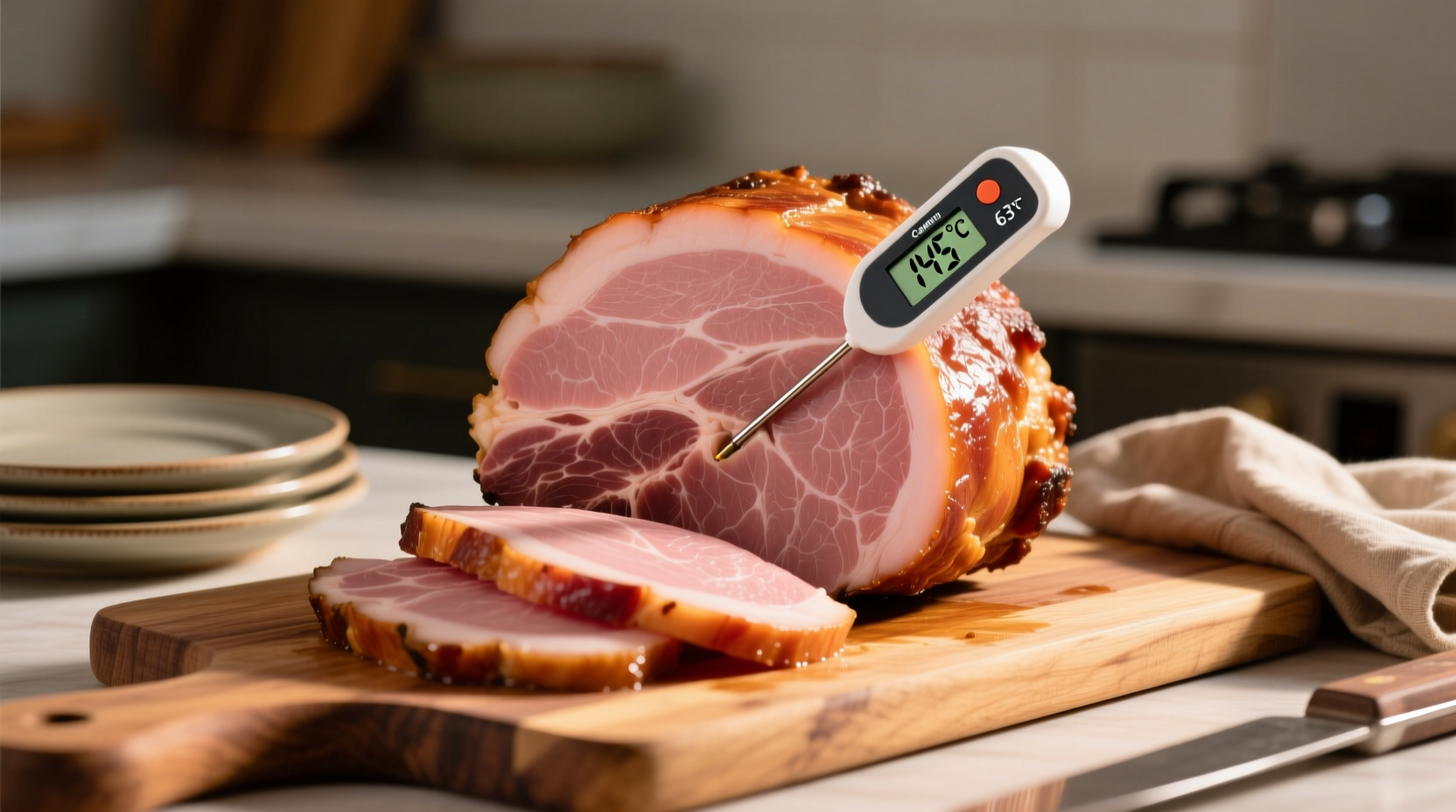Cook raw ham by baking at 325°F (163°C) for 18-20 minutes per pound until it reaches 145°F (63°C) internal temperature, followed by a 3-minute rest. This ensures safe, juicy results every time.
Confused about how to cook raw ham properly? You're not alone. Many home cooks mistakenly treat raw ham like the pre-cooked variety found in most grocery stores. Getting this wrong can lead to dry, tough meat or worse—food safety risks. Let's clarify exactly what you need to know to transform that raw ham into a tender, flavorful centerpiece for your meal.
Raw Ham vs. Pre-Cooked Ham: What You're Really Working With
Understanding your starting point is crucial. Raw ham requires full cooking, while "cook-before-eating" ham needs heating. The USDA clearly distinguishes these categories:
| Type | Label Description | Internal Temp Needed | Typical Source |
|---|---|---|---|
| Raw Ham | "Fresh," "Raw," or "Cook thoroughly" | 145°F + 3 min rest | Butcher shops, specialty markets |
| Cook-Before-Eating Ham | "Cured," "Smoked," but "cook thoroughly" | 145°F + 3 min rest | Grocery store refrigerated section |
| Pre-Cooked Ham | "Ready to eat," "Fully cooked" | 140°F for serving | Grocery store deli or packaged |
Source: USDA Food Safety and Inspection Service
Preparation: Setting Up for Success
Before your raw ham hits the oven, proper preparation makes all the difference:
- Thaw completely if frozen (allow 4-5 hours per pound in refrigerator)
- Rinse and pat dry with paper towels to remove surface bacteria
- Score the fat cap in a diamond pattern (¼-inch deep) for even rendering
- Apply seasoning—a simple rub of brown sugar, black pepper, and cloves works wonders
Cooking Methods Compared
While oven roasting delivers the most consistent results, you have options depending on your equipment and time:
Oven Roasting (Recommended Method)
- Preheat oven to 325°F (163°C)
- Place ham fat-side up on a rack in a roasting pan
- Add ½ cup water to the bottom of the pan
- Cook 18-20 minutes per pound
- Baste every 30 minutes with pan juices
- Insert thermometer into thickest part (avoiding bone)
- Remove at 140°F (it will rise to 145°F during resting)
- Rest 3 minutes minimum before carving
Slow Cooker Alternative
For hands-off cooking: Place ham in slow cooker with 1 cup broth, cook on LOW 4-6 hours until 145°F. Best for smaller hams under 5 pounds.

Temperature Guide: Your Safety Net
Food safety isn't negotiable. The USDA's Food Safety and Inspection Service mandates that raw ham must reach 145°F (63°C) with a 3-minute rest period. This temperature destroys harmful bacteria while preserving moisture.
Many home cooks make the critical mistake of undercooking raw ham, thinking it should be treated like pre-cooked varieties. Don't guess—always use a digital thermometer. Insert it into the thickest part, avoiding bone, for an accurate reading.
Avoiding Common Pitfalls
Even experienced cooks stumble with raw ham. Here's how to avoid the most frequent issues:
- Dry ham: Overcooking by just 5-10 degrees causes significant moisture loss. Remove at 140°F and let carryover cooking do the rest
- Burnt glaze: Apply sweet glazes during the last 20-30 minutes of cooking
- Uneven cooking: Rotate the pan halfway through cooking time
- Food safety risk: Never partially cook and refrigerate to finish later
Serving and Storage
After resting, slice against the grain for maximum tenderness. Leftovers keep refrigerated for 3-4 days or frozen up to 2 months. When reheating, bring to 165°F internal temperature.
For next-day meals, try adding leftover ham to bean soups, frittatas, or pasta dishes—its rich flavor enhances many recipes.
When to Choose Different Methods
Not all cooking situations are equal. Consider these context boundaries:
- Whole hams (8+ pounds): Stick with oven roasting for even heat distribution
- Smaller cuts (4-7 pounds): Can use oven or slow cooker successfully
- Specialty hams (country-style): Require lower temperatures (275°F) and longer cooking
- Time constraints: For last-minute cooking, slice ham into portions to reduce cooking time
Remember that bone-in hams cook more evenly than boneless varieties. If using a spiral-cut raw ham (rare), reduce cooking time by 10-15% to prevent drying.











 浙公网安备
33010002000092号
浙公网安备
33010002000092号 浙B2-20120091-4
浙B2-20120091-4